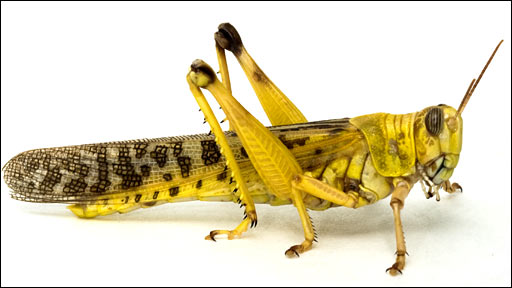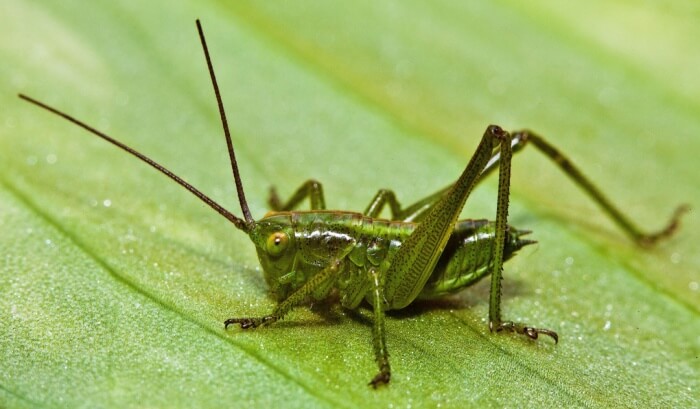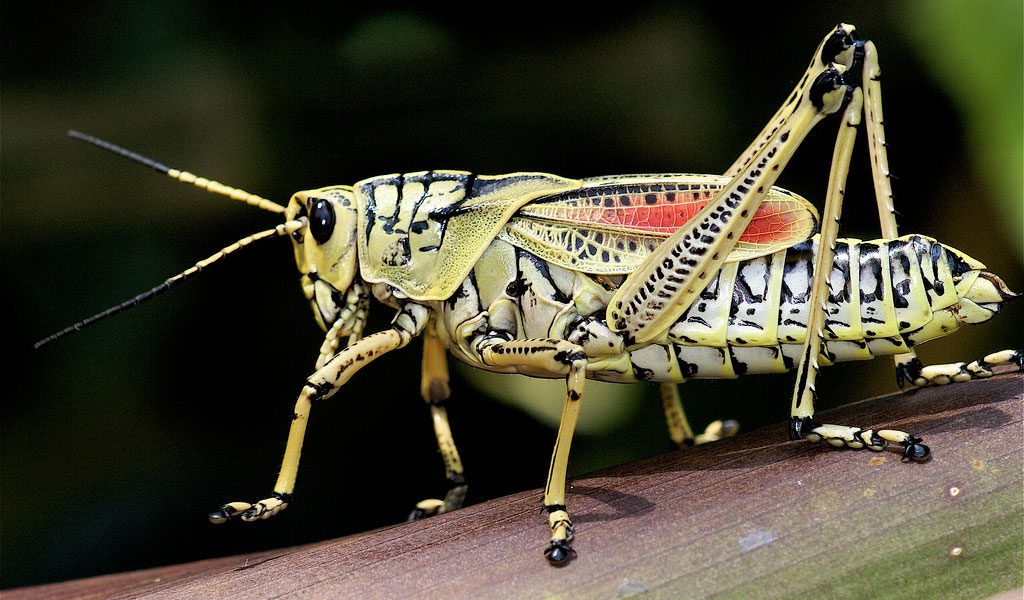Skwim
Veteran Member
.
In main, every Christian accepts the truth of the Bible, some accepting this truth more rigorously than others, which varies from the fundamentalist literal truth to an interpretive truth wherein the Christian feels free to pick which verses are true or not. But regardless of the approach, the fact remains that in places the Bible does make some very specific assertions. "This is X---it is not Y." Last September I alluded to four of these, implying they are actually wrong when I said "Of course the bible also tells me that bats are birds, hares chew cud, grasshoppers walk on only four legs, and the mustard seed is the smallest of all seeds . . . . but what the heck, no book is perfect." Since then one of my examples was challenged, it doesn't matter which one, which set me thinking that perhaps I should briefly explain my reasons for calling all of them wrong.
Herewith then is my explanation of each:
"Bats are birds"
Now some Bibles use the term "fowl" instead of "birds," and in very rare instances, (6%) "creatures," but the error is quite clear; very simply, bats are mammals not birds or fowl.
***********************************************************************************************************
"Hares chew cud"
Cud is partly digested food internally returned from the first stomach, the rumin, to the mouth for further chewing. Hares and other Lagomorphs lack a rumin so they're incapable of producing cud. Most likely this error arose from watching hares and rabbits eat their feces, a dining practice called refection. Here's a simple illustration of these two quite different operations.

***********************************************************************************************************
"Grasshoppers walk on only four legs"
The video below should dispel this error (actual walking at the 1:39 mark).
BTW, locusts are simply nine species of a migrating form of grasshoppers.
***********************************************************************************************************
"the mustard seed is the smallest of all seeds"
The facts say otherwise.

Some here may object to my four choices saying these errors only occurred because the writers at the time simply didn't know any better, which is fine if one accepts that premise that the original Biblical writings were solely the work of such people, but customarily the Bible is said to be the product of an all-knowing god. A deity who worked to tell his followers exactly what was what; that it's a trustworthy work that needn't be questioned. But this still leaves the problem of its errors. Aside from turning a blind eye, a not uncommon practice, what is one to do with them. As a Christian what do YOU do?
In main, every Christian accepts the truth of the Bible, some accepting this truth more rigorously than others, which varies from the fundamentalist literal truth to an interpretive truth wherein the Christian feels free to pick which verses are true or not. But regardless of the approach, the fact remains that in places the Bible does make some very specific assertions. "This is X---it is not Y." Last September I alluded to four of these, implying they are actually wrong when I said "Of course the bible also tells me that bats are birds, hares chew cud, grasshoppers walk on only four legs, and the mustard seed is the smallest of all seeds . . . . but what the heck, no book is perfect." Since then one of my examples was challenged, it doesn't matter which one, which set me thinking that perhaps I should briefly explain my reasons for calling all of them wrong.
Herewith then is my explanation of each:
"Bats are birds"
Leviticus 11: 13-19
13 “And these you shall detest among the birds; they shall not be eaten; they are detestable: the eagle, the bearded vulture, the black vulture, 14 the kite, the falcon of any kind, 15 every raven of any kind, 16 the ostrich, the nighthawk, the sea gull, the hawk of any kind, 17 the little owl, the cormorant, the short-eared owl, 18 the barn owl, the tawny owl, the carrion vulture, 19 the stork, the heron of any kind, the hoopoe, and the bat. 19 And the stork, the heron after her kind, and the lapwing, and the bat.
13 “And these you shall detest among the birds; they shall not be eaten; they are detestable: the eagle, the bearded vulture, the black vulture, 14 the kite, the falcon of any kind, 15 every raven of any kind, 16 the ostrich, the nighthawk, the sea gull, the hawk of any kind, 17 the little owl, the cormorant, the short-eared owl, 18 the barn owl, the tawny owl, the carrion vulture, 19 the stork, the heron of any kind, the hoopoe, and the bat. 19 And the stork, the heron after her kind, and the lapwing, and the bat.
Now some Bibles use the term "fowl" instead of "birds," and in very rare instances, (6%) "creatures," but the error is quite clear; very simply, bats are mammals not birds or fowl.
***********************************************************************************************************
"Hares chew cud"
Leviticus 11:1-6
11 And the Lord spoke to Moses and Aaron, saying to them, 2 “Speak to the people of Israel, saying, These are the living things that you may eat among all the animals that are on the earth. 3 Whatever parts the hoof and is cloven-footed and chews the cud, among the animals, you may eat. 4 Nevertheless, among those that chew the cud or part the hoof, you shall not eat these: The camel, because it chews the cud but does not part the hoof, is unclean to you. 5 And the rock badger, because it chews the cud but does not part the hoof, is unclean to you. 6 And the hare, because it chews the cud but does not part the hoof, is unclean to you.
11 And the Lord spoke to Moses and Aaron, saying to them, 2 “Speak to the people of Israel, saying, These are the living things that you may eat among all the animals that are on the earth. 3 Whatever parts the hoof and is cloven-footed and chews the cud, among the animals, you may eat. 4 Nevertheless, among those that chew the cud or part the hoof, you shall not eat these: The camel, because it chews the cud but does not part the hoof, is unclean to you. 5 And the rock badger, because it chews the cud but does not part the hoof, is unclean to you. 6 And the hare, because it chews the cud but does not part the hoof, is unclean to you.
Cud is partly digested food internally returned from the first stomach, the rumin, to the mouth for further chewing. Hares and other Lagomorphs lack a rumin so they're incapable of producing cud. Most likely this error arose from watching hares and rabbits eat their feces, a dining practice called refection. Here's a simple illustration of these two quite different operations.
***********************************************************************************************************
Leviticus 11:21
“All flying insects that walk on all fours are detestable to you. But you can eat some of these, namely, those that have jointed legs for hopping on the ground: all locusts, katydids, crickets, and grasshoppers. But all the other flying insects that have four legs you are to detest.
“All flying insects that walk on all fours are detestable to you. But you can eat some of these, namely, those that have jointed legs for hopping on the ground: all locusts, katydids, crickets, and grasshoppers. But all the other flying insects that have four legs you are to detest.
The video below should dispel this error (actual walking at the 1:39 mark).
"the mustard seed is the smallest of all seeds"
Mark 4: 30-32
30 He said, “To what shall we liken the kingdom of God, or with what parable shall we compare it? 31 It is like a grain of mustard seed which, when it is sown in the ground, is the smallest seed on earth. 32 Yet when it is sown, it grows up and becomes greater than all shrubs, and shoots out great branches, so that the birds of the air may nest in its shade.”
30 He said, “To what shall we liken the kingdom of God, or with what parable shall we compare it? 31 It is like a grain of mustard seed which, when it is sown in the ground, is the smallest seed on earth. 32 Yet when it is sown, it grows up and becomes greater than all shrubs, and shoots out great branches, so that the birds of the air may nest in its shade.”
"Orchids (Orchidaceae): The World's Smallest Seeds
Certain epiphytic orchids of the tropical rain forest produce the world's smallest seeds weighing only 35 millionths of an ounce. They are dispersed into the air like minute dust particles or single-celled spores, eventually coming to rest in the upper canopy of rain forest trees."
sourceCertain epiphytic orchids of the tropical rain forest produce the world's smallest seeds weighing only 35 millionths of an ounce. They are dispersed into the air like minute dust particles or single-celled spores, eventually coming to rest in the upper canopy of rain forest trees."
.
Last edited:





